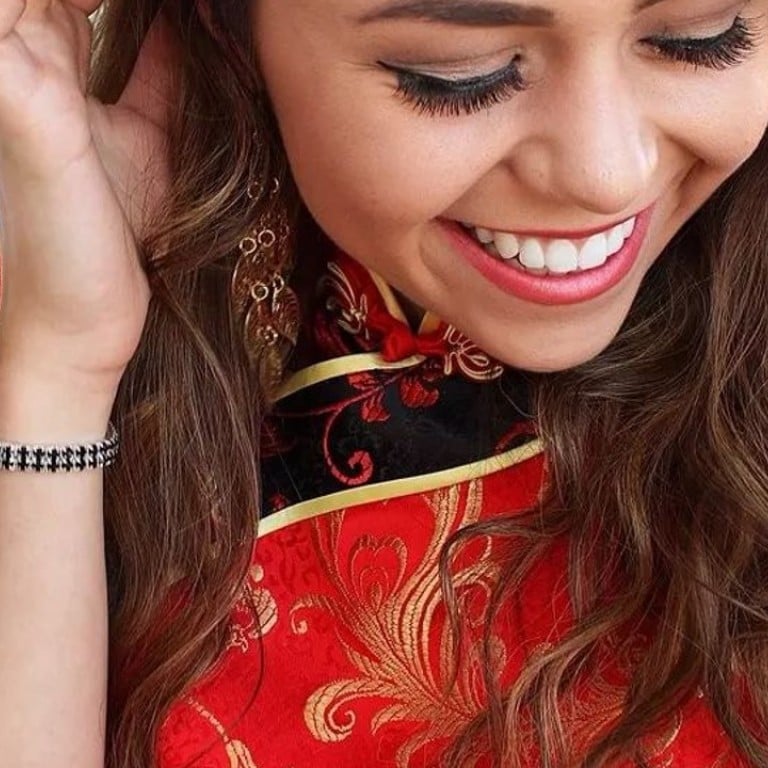
Chinese dress at US prom wins support in China after internet backlash
After criticism of student Keziah Daum’s Twitter post showing her wearing the traditional qipao, Chinese commenters call it cultural appreciation, not appropriation
An American teenager has received support from internet users in China after being criticised for wearing a traditional Chinese dress to her school prom.
Daum has stood by her decision to wear the dress, which was red and embroidered with gold and black, and told the South China Morning Post it projected a “wonderful message”. She has not deleted her original April 22 post.
She was not aware of the dress’ history before buying it at a vintage shop in Salt Lake City, she said in an email, but “simply found a beautiful, modest gown and chose to wear it”.
“One person commented it represented female empowerment,” she wrote. “If that is the case, then it is a wonderful message for any young woman my age to learn, regardless of culture and background.
“I posted photos for my friends to see. I never imagined it would go so far.
“I am sorry if anyone was offended. That was never my intention. I am grateful I was able to wear such a beautiful dress.”
One Twitter user, Jeremy Lam, had written: “My culture is not your ... prom dress.” The tweet generated more than 40,000 retweets, nearly 180,000 likes and thousands of comments on the social media platform.
“This isn’t OK. I wouldn’t wear traditional Korean, Japanese or any other traditional dress and I’m Asian,” another user wrote. “There’s a lot of history behind these clothes. Sad.”
But those commenting in mainland China were less opposed to Daum’s dress.
“Very elegant and beautiful! Really don’t understand the people who are against her, they are wrong!” one person commented on an article by Wenxue City News. “I suggest the Chinese government, state television or fashion company invite her to China to display her cheongsam!”
“It is not cultural theft,” another wrote. “It is cultural appreciation and cultural respect.”
Weibo users added that Daum looked beautiful and criticised those who have accused her.
“Culture has no borders,” one wrote. “There is no problem, as long as there is no malice or deliberate maligning. Chinese cultural treasures are worth spreading all over the world.”
The qipao is believed to have been adapted from the style of Manchu women in the Qing dynasty of 1644 to 1912. The tightly fitting modern version was created in Shanghai in the 1920s and made fashionable by socialites and the upper class.
It fell out of fashion between the 1950s and 1970s, as those who wore it were judged as being bourgeois in a time of anti-tradition movements, but has since regained popularity.
With the recent promotion of traditional Chinese culture, the dress now embodies the idea of being ethnically Chinese.

